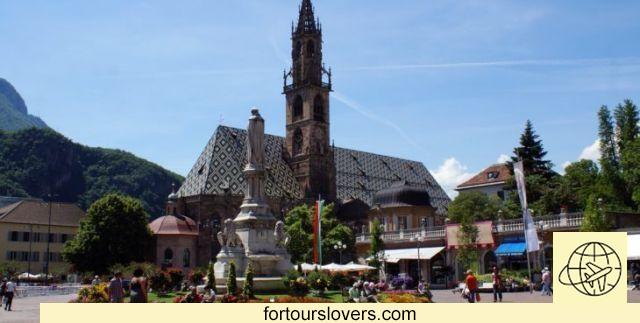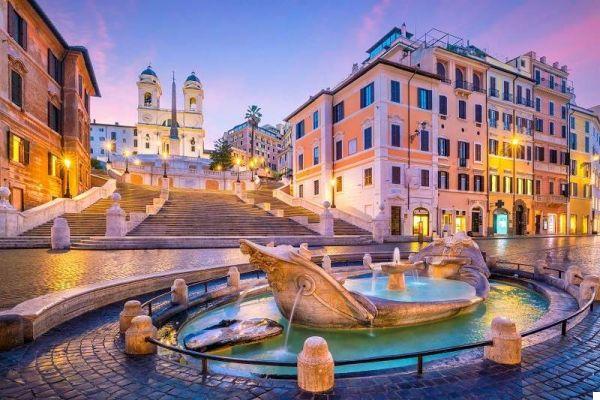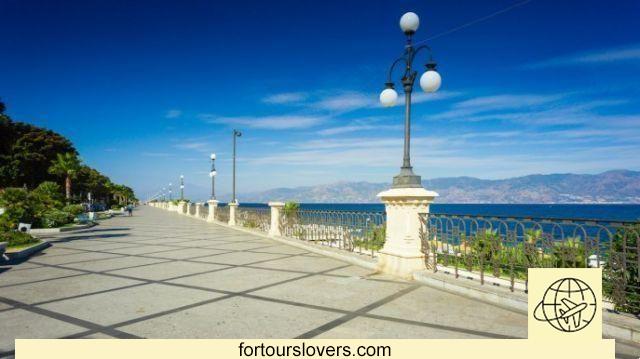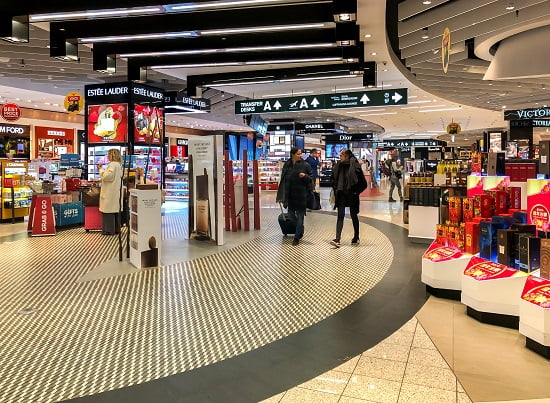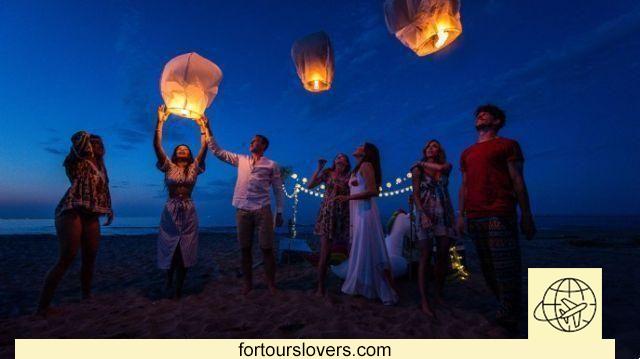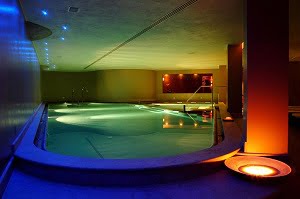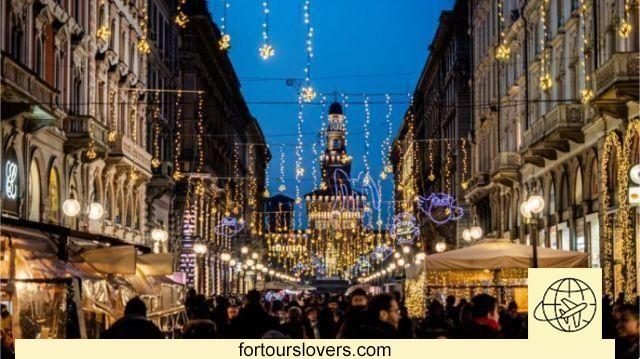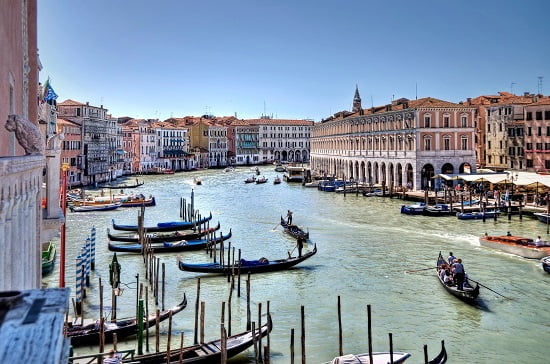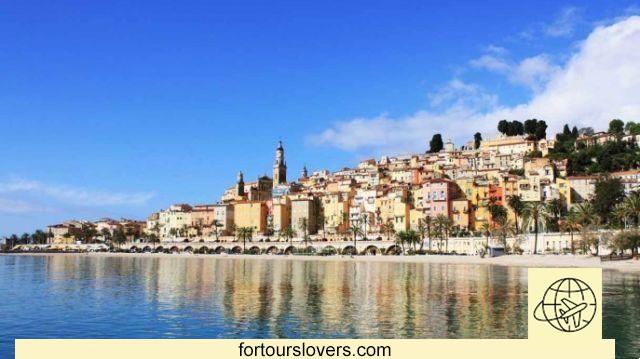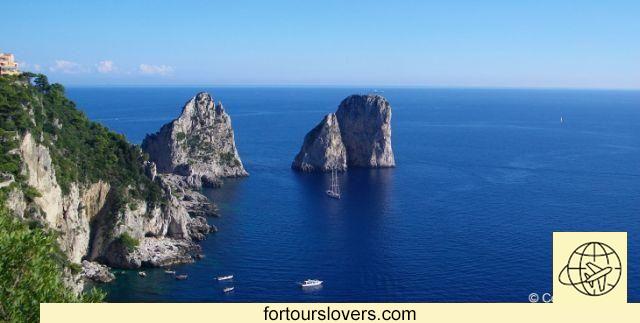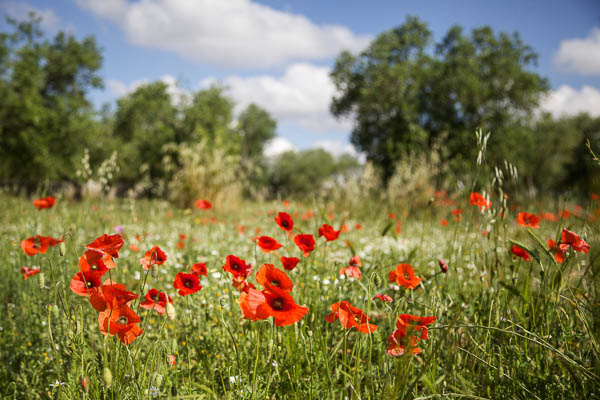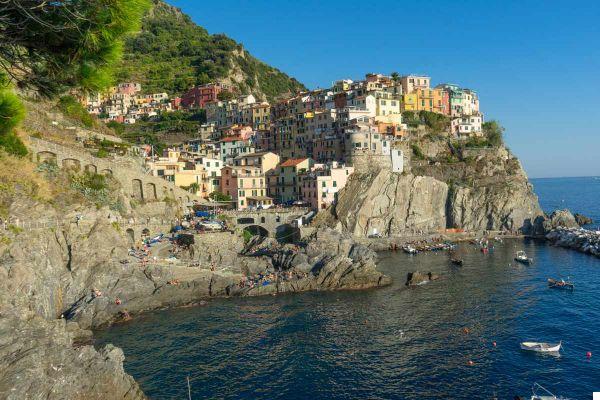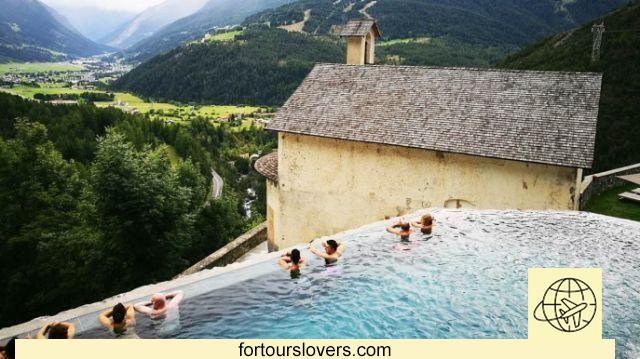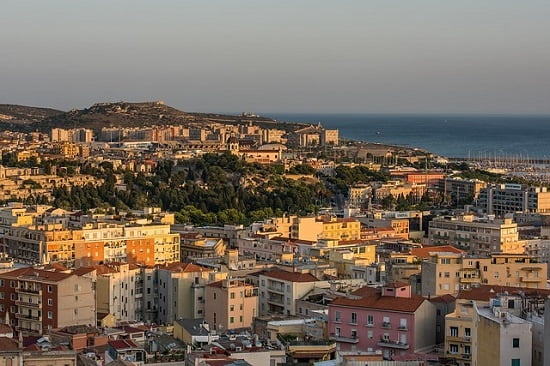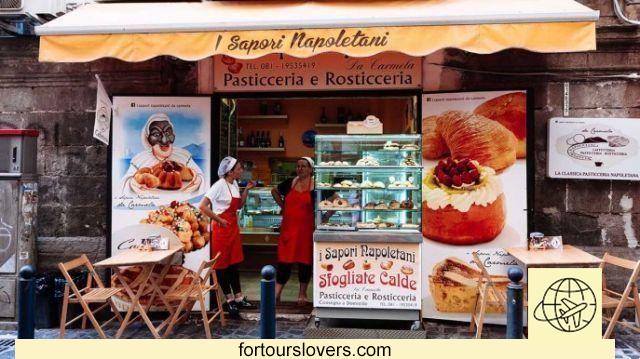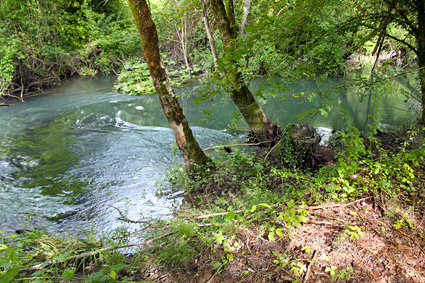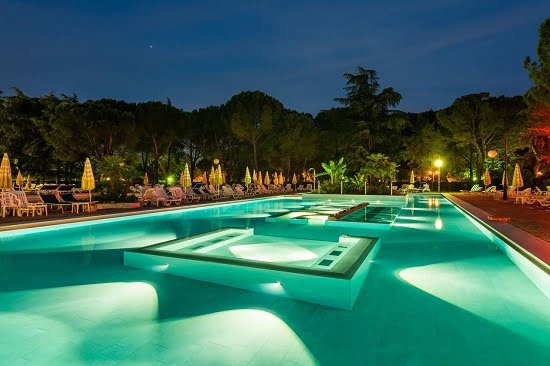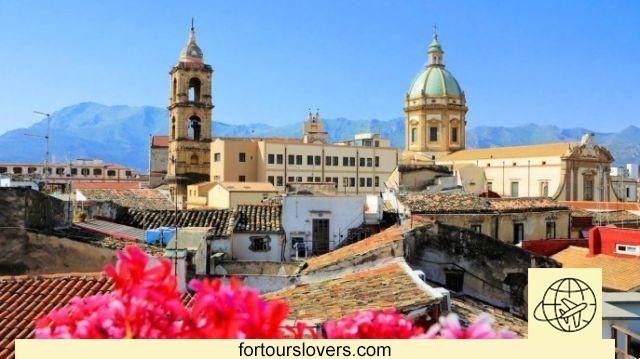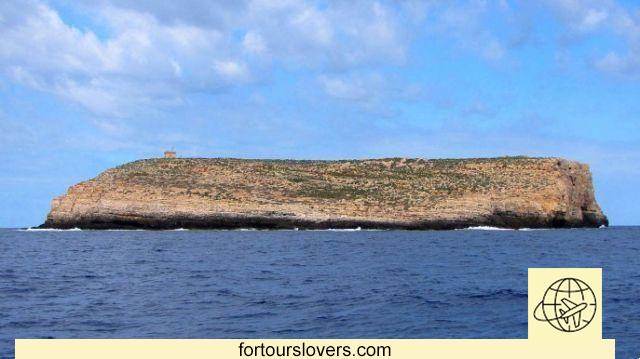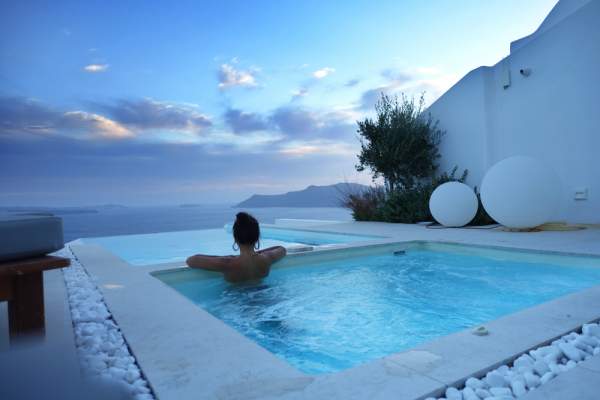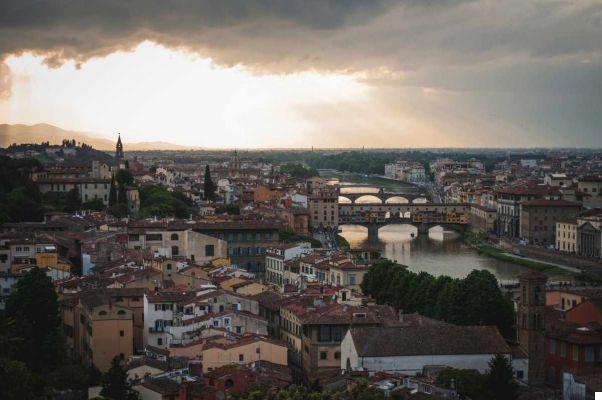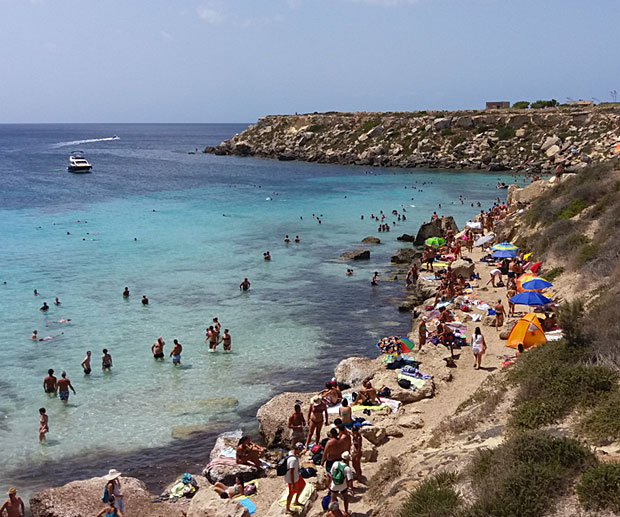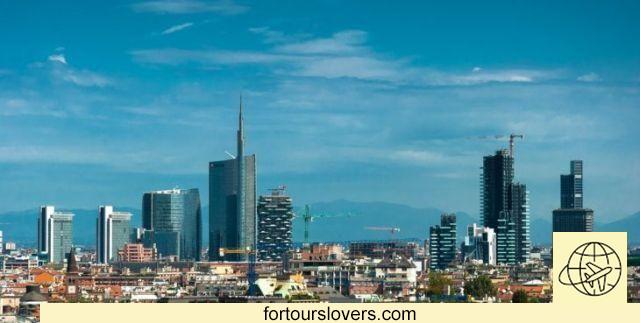
Milan
12 things to do and see in Milan and 3 not to doMilan to live and Rome for the weekend. For years this has been the case stereotype which described the two most important cities in Italy. Work to the first, history to the second; to one the economic-financial primacy, to the other the political-cultural one. Obviously, things have always been more nuanced than that (Milan, for example, has always excelled in the publishing field) and yet there is no doubt that this representation for years has substantially held up from an empirical point of view. After the success of Expo 2015, the picture has changed. Milan, in fact, has also begun to run in tourism, to the point of undermining cities like Florence and Venice in terms of annual visitors, settling immediately behind the capital of Italy. On the other hand, sudden changes are the ones that best highlight some constant. In the case of Milan it can be said that innovation e creativeness they have always been part of the city's history. Not only, therefore, when things turn out for the best, but also when, as in the 90s of the last century, not everything went the right way. In short, it Milanese spirit is what makes the city so fascinating with evident reflections in different fields: fashion, design, gastronomy e entertainment industry. Below we see the main attractions of the city. Happy reading.
1 Cathedral
At the beginning we referred to creativeness e innovation like constant of the history of Milan. To these two we must add a third: the Cathedral of Santa Maria Nascente, in the center of the homonymous square. Since 1386, the year of its foundation by Gian Galeazzo Visconti, this church represents the heart of Milanese spirituality, with over 4 million visitors a year. It must be said that the popularity of the building also contributes centrality of the square, hub for almost all the Milanese tourist attractions, and for this reason generally assumed as starting point for visiting the city. From the architectural point of view, the Cathedral represents a precious testimony of Gothic-Lombard even if - it must be said - the construction of the cathedral lasted for over 5 centuries, so much so that it is customary to distinguish 6 successive phases of construction: Viscontea (1387-1447); Sforzesca (1450-1520); Borromaica (1560-1650); XNUMXth-XNUMXth centuries (1650-1800); nineteenth century (1800-1900); Nine hundred (1900-present). This very long time span also explains thelarge number of statues: over 3000 between inside and outside, with the singular presence of lay personalities (Dante Alighieri, Arturo Toscanini, Vittorio Emanuele II and even the boxer Primo Carnera) alongside prophets and martyrs of the Old and New Testament. The 135 spiers that decorate the exterior of the Duomo, together with the Relic of the Holy Nail kept in a reliquary at the apex of the main apse (according to the legend it would be one of the nails of the cross of Jesus), they are two of the most fascinating elements of the Milan Cathedral which - it should be remembered - in Italy in size it is second only in San Pietro in Vaticano. Also not to be missed is the ascent to the roof (by lift) and a visit to the underground with the archaeological remains of the original Basilica of Santa Tecla, on whose foundations Gian Galeazzo Visconti ordered the construction of the new temple. For more information on history, visiting hours and prices visit the Official site: www.duomomilano.it.
2 Museum of the twentieth century
If you likeart of the '900, in particular the Futurism which greatly influenced the first half of the century from a cultural and political point of view, well then Palazzo dell'Argenario is a must on a visit to Milan. This building, a stone's throw from the Duomo and the Galleria Vittorio Emanuele II (see next point), has since 2009 housed one of the most important Italian art collections of the last century with great emphasis on the works of Boccioni, Marinetti, Balla and the other interpreters of that avant-garde movement that was Futurism. However, many other national and international artists are part of the exhibition, among others Picasso, Klee, Kandinsky, De Chirico, Modigliani, Fontana e Giuseppe Pellizza from Volpedo, author, the latter, of the famous "Fourth Estate" the framework that in fact sanctioned thebreak into the art scene, as well as of course on the political and social issues, of the peasant and worker masses.
For the days and opening hours of the Museo del Novecento see the table:
| Days | Working Time |
| Monday | 14:30 19:30 |
| Tuesday | 09:30 19:30 |
| Wednesday | 09:30 19:30 |
| Thursday | 09:30 22:30 |
| Friday | 09:30 19:30 |
| Saturday | 09:30 22:30 |
| Sunday | 09:30 19:30 |
For more information on history, exhibitions and visiting methods (schools, groups, etc.) consult the place: museodelnovecento.org
3 Vittorio Emanuele II Gallery
Some have rightly called the Milan gallery one station without rails, tracks and trains. In fact, the comings and goings teeming with people it is very similar to that of a railway yard, with the substantial difference that here it is Shopping it matters much more than mobility needs. The Galleria Vittorio Emanuele II, in fact, is a real one shopping center with boutiques of the major high fashion brands next to historic cafes e fast food chains. Together with the so-called "Quadrilatero d'Oro" (see next point), the gallery, designed in 1865 byarchitect Giuseppe Mengoni, is one of the "stages" of star system and Milanese showbiz. In short, there are those who come to look and those, instead, to be looked at. Always beautiful, in Christmas time, according to many, it turns into most "in" place in the city.
4 Fashion district
In Milan it is impossible not to shop. We have already seen it with the Galleria Vittorio Emanuele II but it is the so-called "Quadrilatero della moda" (via Montenapoleone, via della Spiga, via Manzoni, via Sant'Andrea) the temple of Milanese shopping. Ferragamo, Prada, Valentino, Gucci, Krizia, Dolce & Gabbana, Trussardi, Chanel, Moschino, Versace and other big brands are practically all present in such a concentration that is not matched anywhere else in the world, even in New York. Obviously there are few who can afford to buy in this area but that's not the point either. In fact, the most interesting aspect of the fashion district is that it does trend, anticipating the tastes that will be the most popular.
5 Sforzesco Castle
Il Castello Sforzesco, another obligatory stop on a visit to Milan, is located not far from the Duomo. And, just like the city cathedral, the construction of this fortress is due to Gian Galeazzo Sforza that, continuing the initial work of his predecessor Galeazzo II Visconti, built housing for the troops, simultaneously rearranging the park and the moat all around. After the Visconti it was the Sforza's turn: first Francesco Sforza and then Ludovico Maria Sforza, known as il Moro. The latter gave great prestige to the Milanese fortress by calling, among others, the likes of Leonardo da Vinci e Donato Bramante. From the XNUMXth to the XNUMXth century the castle went through a very turbulent phase, passing into French, Spanish and Austrian hands. It is in these centuries that the image of a foreign fortress, a hostile symbol of occupation, settles. A negative prejudice that the Milanese have left behind for good only after the unification of Italy. Coming to the present day, there are two reasons why the Sforzesco Castle is one of the main tourist attractions in Milan. The first is because, right behind it, there is the beautiful Parco Sempione, A 'oasis of peace in the city center. Being able to switch off without having to go too far from work and current affairs is certainly a great advantage, especially in a busy and always rushing city like Milan. The second reason is the presence, inside the building, of several museums. First of all the Museum of Ancient Art, with the section dedicated to Pietà Rondanini by Michelangelo, but the Musical Instruments Museum, Prehistoric Museum and that Egyptian. In short, whether you are looking for a little relaxation or, on the contrary, for cultural stimuli that leave their mark, the Castello Sforzesco is one of the unmissable places in Milan. For more information visit the Official site: milanocastello.it.
6 Torre Branca
Il Parco Sempione mentioned above (see Castello Sforzesco, point 5) is not only the green lung of Milan but is also - above all - a place of memory which bears many traces of the recent history of the city. From memorial to Napoleon III, All 'Arena by Antonio Canova, where Inter and Milan also played, passing through The Mysterious Baths, the fountain designed by Giorgio De Chirico, the favorite park of the Milanese oozes history, culture and art. Special mention for the Branca Tower, which is located right at the entrance to the park. It is a metal tower designed by designer Gio Ponti and built in 1933 on the occasion of the V Triennale of Milan. It is called Branca Tower because in 1972, i Branca brothers, owners of the distillery of the same name, took charge of the restructuring of the work for some time uninhabitable. In addition to the still current combination of architecture and technology, the particularity of this metallic totem is that an elevator allows you to climb to the top (108 meters), from which you can enjoy a beautiful view of the city. Not to be missed!
For the visiting hours della Torre Branca consult the tables:
| Winter times (September 15 - May 15) | ||
| Days | Morning | Afternoon |
| Monday | closed | closed |
| Tuesday | closed | closed |
| Wednesday* | 10:30 12:30 |
16:00 18:30 |
| Thursday | closed | closed |
| Friday | closed | closed |
| Saturday | 10:30 13:00 |
18:30 20:30 |
| Sunday | 10:30 14:00 |
14:30 19:00 |
| *Wednesday free admission for school groups and pensioners | ||
In case of bad weather or strong wind the Branca Tower will remain closed. All visits to the Branca Tower last approximately 7 minutes.
| Summer times (May 16 - September 14) | ||
| Days | Morning | Afternoon |
| Monday | closed | closed |
| Tuesday | closed | 15:30 19:00 |
| Wednesday* | 10:30 12:30 |
15:00 19:00 |
| Thursday** | closed | 15:30 19:00 |
| Friday** | closed | 15:30 19:00 |
| Saturday** | 10:30 14:00 |
14:30 19:30 |
| Sunday | 10:30 14:00 |
14:30 19:30 |
| * Wednesday free admission for school groups and pensioners ** Thursday, Friday and Saturday also 20:30 - 00:00 |
||
In case of bad weather or strong wind the Branca Tower will remain closed. All visits to the Branca Tower last approximately 7 minutes.
For more information visit the Official site: www.museobranca.it
7 Brera Art Gallery
The first thing that catches the eye of the Brera palace is the statue of Napoleon Bonaparte in the courtyard that precedes the entrance. Made by the artist Antonio Canova, the sculpture portrays the leader with the features of the Roman god Mars, celebrating not only his conquering skills but also his role as a civilizing hero. What we admire, however, is one bronze copy of the work, since the marble original is in the Wellington Museum in London. And Napoleon, moreover, also has to do with Strong piece of the Brera palace, namely the famous one picture gallery with hundreds of paintings from the Middle Ages to modernity. Napoleon, in fact, used this former Jesuit college as a deposit, amassing many of the works of art confiscated around northern Italy. A form of state collecting which marks a profound change with respect to private collecting from which, for example, the Uffizi in Florence arose. In any case, a fortune for Milan that some of the greatest masterpieces of Renaissance art have been found “at home”. Just to mention a few, without claiming to be exhaustive: the Pietà by Giovanni Bellini, the Dead Christ by Andrea Mantegna, lo Marriage of the Virgin by Raffaello and the Dinner at Emmaus by Caravaggio. In short, the Pinacoteca di Brera is another obligatory stop on a visit to Milan, especially since the collection, as mentioned, does not end only in the fifteenth and sixteenth centuries but also hosts significant contributions fromFlemish art, without forgetting some of the best interpreters of Italian painting at the turn of the nineteenth and twentieth centuries.
For the visiting hours of the Pinacoteca see the table:
| Days | Working Time |
| Mon | closed |
| Tue - Sun * | 08:30 19:15 |
*Every first and third Thursday of the month 08:30 - 22:15.
More information on the history, masterpieces and other cultural institutions present inside the building (Academy of Fine Arts; Braidense Library; Astronomical Observatory) consult the place: pinacotecabrera.org.
8 Last Supper
For notoriety theLast Supper by Leonardo is second only to the Mona Lisa kept in the Louvre in Paris. Probably the (relative) lesser fame of Leonardo's Last Supper contributed to the rapid deterioration of the work that the Florentine artist painted on the wall of refectory of the Dominican Monastery of Santa Maria delle Grazie. To commission the painting, 4 meters high and 9 long, Ludovico Il Moro which strongly pushed for the representation of the announcement of the betrayal that Jesus addressed to the apostles before being arrested. A scene to which Leonardo was able to transfer all the drama of the biblical story, painting on the faces of the apostles the disbelief for listening and the contemporary fear of being pointed out by the prophet. From 1977 to 1999 Leonardo da Vinci's Last Supper was the subject of one of the longest and most complicated restoration campaigns never experienced. An enormous job that allowed the satisfactory recovery, even if necessarily partial, of one of the absolute masterpieces of the Renaissance which the Florentine genius worked for three years, from 1494 to 1497. To see the Last Supper Reservations are required and can be made either by phone (calling 02 92 800 360) or online from the following website: www.vivaticket.it (from which it is also possible to book a visit to the Brera Art Gallery, see previous point) . Not to be missed!
9 Basilica of Sant'Ambrogio
Second in importance only to the Duomo, the Basilica of Sant'Ambrogio it is undoubtedly another a must of a visit to Milan. Its importance goes beyond the religious aspect and directly affects another cornerstone of the city's identity: the close link between the local church and civil society. A relationship that is one of the secrets of Milan's success, since it has historically allowed the most dynamic part of the city to experiment and innovate in pursuit of profit, leaving the church to take care of the least. Having said that, the basilica of the patron saint also deserves from an architectural point of view. Art historians, in fact, agree that it is the more shining testimony of the Lombard-Romanesque, a source of inspiration for the construction of many other churches around the region. To see, the Sacellum of San Vittore in ciel d'Oro, A small chapel near the altar famous for the mosaics that decorate the walls and the barrel vault. Same importance for theGolden Altar made by the master I want it, a very active goldsmith in the XNUMXth century. The oldest of the two bell towers, made by Monks Benedictines. The other, the higher one, was built three centuries later by the hand of the canons following a long conflict between the parties about the use of the church altar.
For the visiting hours of the Basilica of Sant'Ambrogio see the table:
| Days | Morning times | Afternoon hours |
| Mon - Sat | 10:00 12:00 |
14:30 18:00 |
| Sun | 15:00 17:00 |
For the times of the Holy Masses, information on how to get and the reception of schools consult the place: www.basilicasantambrogio.it
10 The Navigli
I ships, about half an hour's walk from the Duomo, are one of the most interesting areas of Milan. I am both for thehistorical importance covered in the past that for the tourist present started in the 80s of the last century and finally exploded after Expo 2015. Walking along the Naviglio Grande and Naviglio Pavese, the two waterways around which the district extends, it may seem to be in Amsterdam or Stockholm, which is incredible considering that unlike the two northern European cities, Milan has never had large waterways . Indeed, the Navigli were born precisely to compensate for the absence of a main waterway by drawing on the small Seveso, Lambro and Nirone to provide the city with a river port that favored its trade. To fully understand the historical value of this grandiose hydraulic engineering work, to whose realization he also contributed Leonardo da Vinci, just think that the marble blocks used for the construction of the Cathedral were transported entirely along the canals. In the XNUMXth and XNUMXth centuries the road and rail transport prevail decreed a slow but inexorable decline of the neighborhood, in the meantime inhabited mainly by workers which were absorbed by the industries around the city. At the end of the 900th century, however, the decline of the industry, to the advantage of tertiary and finance, accompanied a further transformation of the area, frequented by artists and from new bourgeoisie small town. With the new millennium, the definitive tourist consecration with the opening of bars, restaurants, trattorias and an infinity of other commercial activities that have made the Navigli one of the key areas of Milanese nightlife. There is not only this though. Alongside the channels, including the Naviglio della Martesana, hitherto not mentioned, the network of cycle paths, in order to allow those who wish to get to know the other Milan, that of areas such as Crescenzago, Gorgonzola, Assago, Rozzago etc. otherwise overlooked by traditional sightseeing. Not to be missed!
11 Monumental Cemetery
Among the symbols of Milan, next to the Cathedral and the Basilica of Sant'Ambrogio, there is also the Cimitero Monumentale. Not only because there are buried personalities who have made the civil, political, artistic and literary history of Italy (just to mention a few: Alessandro Manzoni, Filippo Turati, Salvatore Quasimodo, Arturo Toscanini, Giorgio gaber e Franca Rame) but also because this enormous space of over 250.000 square meters offers multiple architectural ideas. More in detail, the peculiarity of the Monumental Cemetery of Milan consists in incorporating different styles from Gothic to Art Nouveau, passing through Romanesque, Byzantine and Neoclassical. In short, at the same time a place of memory and an example of architectural eclecticism which deserves to be visited and valued.
The Monumental Museum of Milan respects the following times:
| Days | Working Time |
| Mon | closed |
| Tue - Sun | 08:00 18:00 |
More information on the dedicated page of site of the municipality of Milan.
12 San Siro Stadium
San Siro is not a stadium like the others. The historical definition of "Football ladder" (in evident similarity with the Teatro alla Scala, also in Milan) to understand the emotional bond of the Milanese with this stadium where the two glorious city teams alternate, theInter and Milan. For some years now, in addition to the museum, it has been possible to visit all the interiors retracing the real itinerary of the players: mixed area, changing rooms, tunnels, playing field and even the stands. In short, once in Milan, especially if you care about one of the two teams, a visit to the Giuseppe Meazza in San Siro is a must. The Museum & Tour it is open every day from 9:30 to 18:00. For book online and for more information visit the place: www.sansiro.net.
1 Beware of pickpockets
As in all crowded places in every big city, even in Milan it can happen to run into some malicious pickpocket. The precautions are the classic ones that we have already suggested other times: do not wear chains, bracelets, rings of particular value; do not leave the bag open around; do not keep the wallet in the back pocket of the trousers; don't carry a lot of cash etc.
2 Do not drive around the city
The historic center of Milan must be visited on foot. Alternatively, using public transport which is punctual and frequent in the Lombard capital. Leave the car at the hotel or, better still at home, since there is a serious risk of ruining your holiday between the ZTL, pedestrian areas and blue lines. Furthermore, giving up the car means contributing to the lowering of air pollution, a phenomenon that the city administration has been dealing with for years by implementing all possible measures and initiatives to improve air health.
3 Do not wear inappropriate clothing to visit churches and museums
Even if the heat does not give respite, you do not enter the Cathedral with evident necklines or in Bermuda shorts and slippers. Neither at the Duomo, nor in Sant'Ambrogio and more generally in all the symbolic places, even non-religious ones, of Milan (museums, for example). A question of respect which also includes the ban on taking pictures, at least during religious celebrations.




